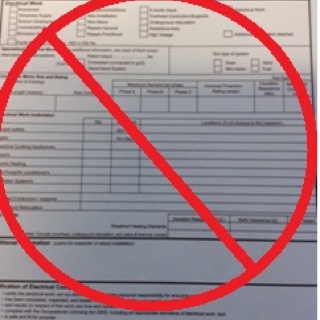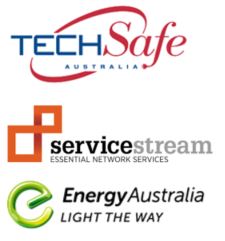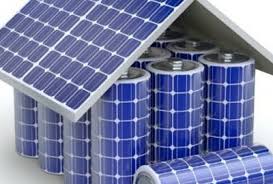Title Page
-
Document No.
-
Audit Title
-
Client / Site
-
Conducted on
-
Prepared by
-
Location
-
Personnel
Job Details
-
ESU File Number
-
Address
-
Tenant/Owner
-
Phone
-
Electrical Worker installing and testing
-
A Grade No.
-
Contractor
-
C Grade No.
-
Attached COC No.
-
Date Issued
-
Work Performed for COC
-
ESO
-
Date
Section 1: Application and Fundamental Principles
-
1. Ensure that all electrical insulation and electrical enclosures provide effective protection against Direct Contact with live parts. See page 27 of AS/NZS 3000:2007 for definition. 1.5.4
-
2. Ensure that all electrical insulation and electrical enclosures, double insulation and/or isolation transformers provide effective protection against Indirect Contact with live parts. See page 27 of AS/NZS 3000:2007 for definitions. 1.5.5
-
3. Protection provided against thermal effects, e.g. enclosure, guarding or screening of flammable materials, hot surfaces and parts that may cause physical injury. 1.5.8
-
4. Ensure that unused cables are protected against unwanted voltages by suitable termination at both ends in the same manner as is required for live conductors. 1.5.11.4
-
5. Ensure that where electrical cables and/or equipment penetrate fire barriers, that effective protection is provided to prevent spread of fire. 1.5.12
-
6. Ensure that electrical equipment and accessories are safe to use. There is no damage that could impair safe operation. Unused electrical equipment is safely disconnected. 1.7
-
7.Equipment has been installed in accordance with manufacturer's instructions 1.7.1 (c)
-
8. Ensure that all electrical equipment intended to be installed within an installation complies with required standards. 1.9
Section 2: General Arrangement, Control and Protection
-
9. Ensure that switchgear is correctly fitted and terminated. 2.1
-
10. Ensure that the current carrying capacity of consumer’s mains and sub-mains is correct. 2.2.2
-
11. Ensure that main switch(s) are fitted and clearly labelled. 2.3.3
-
12. Ensure that isolation and switching devices are fitted to protect against injury from mechanical movement in electrical devices and motors. 2.3.6
-
13. Ensure that correct protective overload devices are fitted, especially for max circuit lengths as per Appendix B5. 2.5
-
14. Ensure that the fault current ratings for RCD/MCB’s are appropriate. 2.5.4.5
-
15. Ensure that correct residual current devices are fitted. 2.6.1
-
16. Ensure the switchboard is installed correctly, including restricted locations. 2.9.2
-
17. Ensure that emergency exits are provided. 2.9.2.2
-
18. Ensure that neutral bars, earth bars, and active links are fitted and correctly terminated. 2.9.4
-
19. Ensure that switchboards and their electrical equipment are clearly labelled. 2.9.5
-
20. Ensure that switchboard wiring is correctly terminated. 2.9.6
Section 3: Selection and Installation of Wiring Systems
-
21. Ensure that cables are protected against external influences. 3.3
-
22. Ensure wiring systems are protected against mechanical damage 3.3.2.6
-
23. Ensure that wiring systems are protected against external influences such as flora and fauna. 3.3.2.9&10
-
24. Ensure that where a wiring system is exposed to direct sunlight, a wiring system suitable for the environment is used or adequate shielding is provided 3.3.2.11
-
25. Ensure that the current carrying capacity of circuit wiring is correct. 3.4
-
26. Ensure that the total voltage drop for the installation is less than 5%. 3.6
-
27. Ensure that wiring connections are correct. 3.7
-
28. Ensure that all connections, joints and terminations in earthing conductors are correct. 3.7.2.11
-
29. Ensure that joints in cables are adequately enclosed. 3.7.3
-
30. Ensure that the cable cores are correctly identified. 3.8
-
31. Ensure that there is adequate support and fixing for cables. 3.9.3
-
32. Ensure that cables are segregated from other services and electrical installations. 3.9.8
-
33. Ensure wiring enclosures are installed correctly ie: adequate support, IP rating maintained, provision for expansion, suitable for exposure to UV 3.10.3
-
34. Ensure that underground wiring is installed correctly. 3.11
-
35. Ensure route of underground wiring is recorded. 3.11.4.6
-
36. Ensure that aerial installation conditions are correct. 3.12
Section 4: Selection and Installation of Appliances and Accessories
-
37. Ensure that isolation and switching devices are fitted to protect against thermal effects produced by motors, room heaters , water heaters, etc. 4.2
-
38. Ensure that switching devices for socket outlets are installed as required. 4.4.4
-
39. Ensure recessed luminaires are installed correctly and appropriate clearances maintained. 4.5.2.3.1
-
40. Ensure that functional switching devices are fitted to cooking appliances. 4.7
Section 5: Earthing Arrangements and Earthing Conductors
-
41. Ensure that all the earthing conductors are the appropriate size and colour. 5.3
-
42. Ensure that the MEN connection is installed correctly. 5.3.5
-
43. Ensure that the earth electrode is installed correctly. 5.3.6
-
44. Ensure that the creation of an earthed situation that may require earthing of additional electrical equipment is addressed. Ref: AS/NZS 3000:2007 Page 28, clause 1.4.44 for definition. 5.4
-
45. Ensure a permanent label is attached to the main earthing conductor at the earth electrode: WARNING: ‘MAIN ELECTRICAL EARTHING CONDUCTOR—DO NOT DISCONNECT’ 5.5.1.3
-
46. Ensure the location of the earth electrode is identified at the main switchboard. 5.3.6.4
-
47. Ensure that earthing in outbuildings and detached portions of an electrical installation comply with standards, especially neutral connection. 5.5.3.1
-
48. Ensure that all the equipotential bonding conductors are the appropriate size and colour. 5.6
-
49. Conductive reinforcing within a concrete floor or wall forming part of a shower or bathroom shall be bonded to the earthing system of the electrical installation. 5.6.2.5
Section 6: Damp Situations
-
50. Particular installation conditions for socket outlets around baths, showers and other fixed water containers. There will not be any socket outlets fitted within Zones 0 and 1 or within 300mm of the floor. Socket outlets installed in Zones 2 and 3 must be protected by an approved method. 6.2.4.2
-
51. Particular installation conditions for switches and other accessories around baths, showers and other fixed water containers. There will not be any switches or accessories fitted in a Zone 0 area. Switches and accessories fitted within Zone 1, 2 and 3 areas will be protected by an approved method. 6.2.4.3
-
52. Particular installation conditions for socket outlets around swimming, paddling and spa pools. There will not be any socket outlets fitted within Zone 0 areas. The correct degree of protection required for Zones 1, 2 and 3 will be provided for all socket outlets installed within those zones. 6.3.4.3
-
53. Particular installation conditions for luminaires and other electrical equipment around baths, showers and other fixed water containers. The correct degree of protection required for each Zone will be provided for all other electrical equipment. 6.2.4.4 & 5
-
54. Ensure installation conditions for electrical equipment and accessories are correct in other damp situations including pools, spas, saunas, fountains and water features, refrigeration rooms and hose down areas. 6.1.2
Section 7: Special Electrical Installations
-
55. Ensure that safety services are installed correctly. 7.2
-
56. Ensure generators are installed correctly and in accordance with AS/NZS 3010. 7.3
Section 7.3: Solar installation AS/NZS 5033 requirements
-
57. Ensure systems installed in domestic dwellings do not exceed 600V DC. 3.1 AS/NZS 5033
-
58. Ensure all equipment and enclosures installed at the PV array are suitably rated for UV resistance and IP rating of at at least IP54. 4.3.3.1 AS/NZS 5033
-
59. Ensure isolators adequately and independently fixed ie; not fixed to the panels and accessible. 4.3.3.2 AS/NZS 5033 and 2.3.6.4 AS/NZS 3000
-
60. Ensure DC isolators are appropriately rated and wired in accordance to manufacturer's instructions 4.3.5.2 AS/NZS 5033
-
61. Ensure there adequate means of support for array cabling under panels. 4.3.6.3 AS/NZS 5033
-
62. Ensure cable enclosures on roof appropriately installed so as not to obstruct the natural water drain and promote the accumulation of debris. 4.3.6.3.1 AS/NZS 5033
-
63. Ensure all are plug, sockets and connectors are compliant and mated with those of the same type from the same manufacturer 4.3.7 AS/NZS 5033
-
64. Ensure DC cables installed within buildings is adequately protected in metallic or heavy duty conduit as required. 4.3.6.3.2 AS/NZS 5033
-
65. Ensure earthing connections at array are adequately protected against corrosion and connected by approved means. 5.5.5.3 AS/NZS 3000 and 4.4.2.2 AS/NZS 5033
-
66. Ensure DC conduits labelled as required. 5.3.1 AS/NZS 5033
-
67. Ensure disconnection devices are appropriately labelled to correspond with the respective array it is controlling. ie; to distinguish one string isolator from another. 5.5.1 AS/NZS 5033
-
68. Ensure appropriate warning labels are installed including shutdown procedures, Voc and Isc values. 5.4 AS/NZS 5033
-
69. Ensure appropriate warning labels are installed at the main switchboard and any associated distribution switchboards indicating the alternative supply and the main isolation location. 2.3.3.4 AS/NZS 3000
Section 8: Verification
-
Mandatory Tests
-
70. Check the date of initial energisation of an installation is available on-site either by marking or in an accessible record. 8.4
-
71. Earth resistance test for other earthed and equipotential bonded parts, including bathroom reinforcing. 8.3.5.1
-
72. Earth resistance test of main earthing conductor. Max. 0.5Ohms. 8.3.5.2
-
73. Insulation resistance test of installation. Min. 1Meg Ohm. 8.3.6.2
-
74. Consumer’s mains test – ensure polarity is correct. 8.3.7.1 (Common Consumers Mains Energised)
-
75. Sub-mains test – ensure polarity is correct. 8.3.7.1
-
76. Final sub-circuit test – ensure polarity is correct. 8.3.7.1
-
77. Final sub-circuit test – ensure connections are correct. 8.3.8.1
-
78. Verification of Fault Loop Impedance, the impedance required for automatic disconnection of supply shall be verified on each circuit by (a) measuring the total resistance of the active and protective earthing conductors; or (b) where supply is available, verification of the earth fault-loop impedance. 8.3.9
-
79. Socket-outlets protected by an RCD, Verify operation of RCD’s. An RCD tester shall be used for this test. 8.3.10.1
-
80. Other RCD’s, Verify operation of RCD by the operation of the integral test device. 8.3.10.1
Network Operator (e.g. PowerWater Corporation)
-
81. Installation rules
-
82. Metering rules
-
83. Service rules
Electricity Safety Regulator
-
84. As per Clause 5 (1) Electricity Reform (Safety and Technical) Regulations. Check that a competent person has filled out the Certificate of Compliance correctly. (CoC)
-
85. Ensure that switchboards have been approved for use and/or manufacture in the Northern Territory (Electrical Safety Bulletin 03.01.03).
Compliance Report
-
Report















